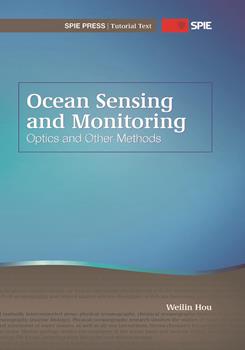|
The next time you fly over the ocean, look out the airplane window and observe what is beneath you. The water will appear dark blue when flying over the clean, deep, open ocean; greenish when closer to shore; and yellowish or almost dark brown in color closer to cities, where the water becomes dirty. If you are lucky enough to visit the Bahamas, the water is many shades of breathtaking light blues and greens, caused by the shallow sandy or grassy bottoms. These many colors of the ocean can only be seen if you’re traveling on a clear, sunny day, and the sun is not in the way (i.e., opposite of the ocean surface norm, relative to you), otherwise you will only see a whitish glint, preventing you from discerning the color of the water. Viewing becomes worse or even impossible if there is a large amount of dust in the air, or if it is foggy or cloudy.
All of these viewing situations summarize the key topics important to ocean color remote sensing. The crude, visual observations from our naked eyes are replaced by highly sophisticated cameras or radiance sensors, with multiple channels (colors and spectral bands), i.e., they are multispectral. These channels can consist of dozens or even hundreds of bands (hyperspectral), covering not only the bands visible to our eyes (380 to 700 nm), but also bands beyond. These bands include IR channels that are sensitive to sea surface temperature (SST), and microwave channels for sea surface roughness and derived wind velocity, SST, and salinity distribution at the surface. The guesswork of water types made by simple human observation (such as those described in the opening paragraph), and then the possible constituents and corresponding concentrations of each, can now be carried out by inversion or retrieval algorithms, built on complex relationships among various channels. This is often coupled with observations of bottom types and reflectance, which can produce surprisingly accurate water depth information when the water is shallow and uniform. Of course, all of this information must be gathered under almost ideal situations, with little or no influence from the atmosphere between the sensor and the ocean. In other words, there can be no clouds or dense aerosols, or there must be means for completely compensating or accounting for their contribution. Lastly, the effect from surface glint as a function of sun angle and sea state must be of minimal concern, or be able to be removed effectively. This is basically the essence of atmospheric correction, under the assumption that the sensor system has been well calibrated and validated.
|


